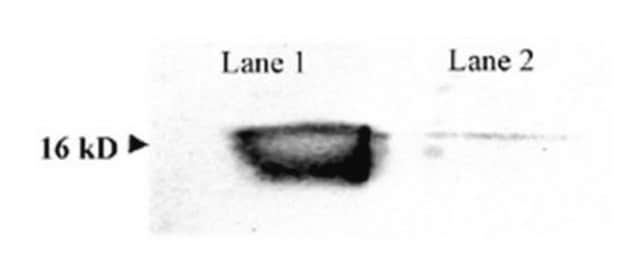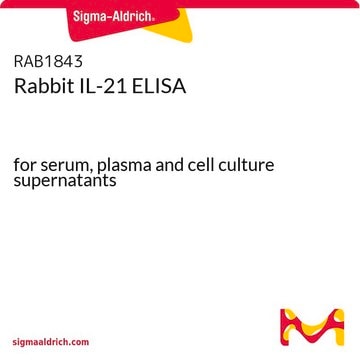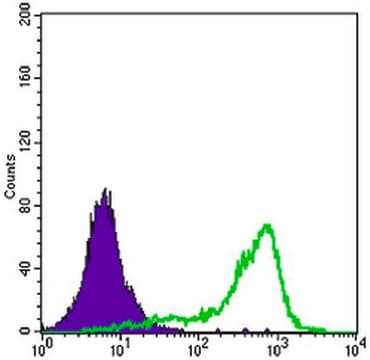추천 제품
생물학적 소스
rabbit
Quality Level
항체 형태
serum
항체 생산 유형
primary antibodies
클론
polyclonal
종 반응성
human
반응하면 안 됨
mouse
제조업체/상표
Chemicon®
기술
western blot: suitable
NCBI 수납 번호
UniProt 수납 번호
배송 상태
dry ice
타겟 번역 후 변형
unmodified
유전자 정보
human ... SOD1(6647)
일반 설명
Mutations in the copper/ zinc superoxide dismutase (SOD1) gene are associated with 15- 20% of the familial forms of motoneuron disease. This 153 amino acid metalloenzyme is expressed in virtually all cells of all organisms above bacteria and is highly conserved across species, although some minor variations do occur. The incorporation of the mutated form of the SOD1 human gene into a transgenic mouse leads to the onset of the disease that closely resembles the human condition. These animals become weak at about 2-4 months of age and rapidly lose function, which results in death 4- 6 weeks later.
특이성
Superoxide Dismutase 1 (SOD1), human specific.
면역원
Epitope: aa 25-37
Synthetic peptide corresponding to amino acids 25-37 of human SOD1.
애플리케이션
Anti-Superoxide Dismutase 1 Antibody, aa 25-37 detects level of Superoxide Dismutase 1 & has been published & validated for use in WB.
Western blotting: 1:500
Optimal working dilutions must be determined by end user.
Optimal working dilutions must be determined by end user.
저장 및 안정성
Maintain lyophilized material at -70°C (dry) for up to 12 months. After reconstitution maintain frozen at -20°C in undiluted aliquots for up to 6 months. Avoid repeated freeze/thaw cycles. Glycerol (1:1) can be added for additional stability.
법적 정보
CHEMICON is a registered trademark of Merck KGaA, Darmstadt, Germany
Not finding the right product?
Try our 제품 선택기 도구.
Storage Class Code
11 - Combustible Solids
WGK
WGK 1
Flash Point (°F)
Not applicable
Flash Point (°C)
Not applicable
시험 성적서(COA)
제품의 로트/배치 번호를 입력하여 시험 성적서(COA)을 검색하십시오. 로트 및 배치 번호는 제품 라벨에 있는 ‘로트’ 또는 ‘배치’라는 용어 뒤에서 찾을 수 있습니다.
Nerve terminal degeneration is independent of muscle fiber genotype in SOD1 mice.
Carrasco, DI; Bichler, EK; Seburn, KL; Pinter, MJ
Testing null
Nathália Villa dos Santos et al.
Oxidative medicine and cellular longevity, 2015, 162876-162876 (2015-11-20)
The toxicologic effects of copper (Cu) on tumor cells have been studied during the past decades, and it is suggested that Cu ion may trigger antiproliferative effects in vitro. However, in normal cells the toxicologic effects of high exposures of
자사의 과학자팀은 생명 과학, 재료 과학, 화학 합성, 크로마토그래피, 분석 및 기타 많은 영역을 포함한 모든 과학 분야에 경험이 있습니다..
고객지원팀으로 연락바랍니다.







